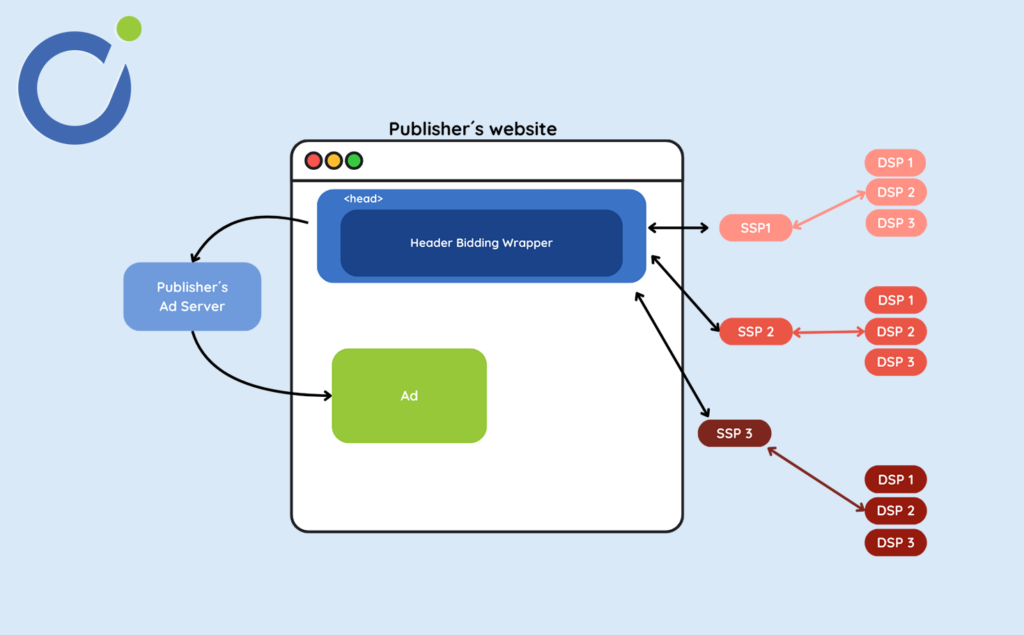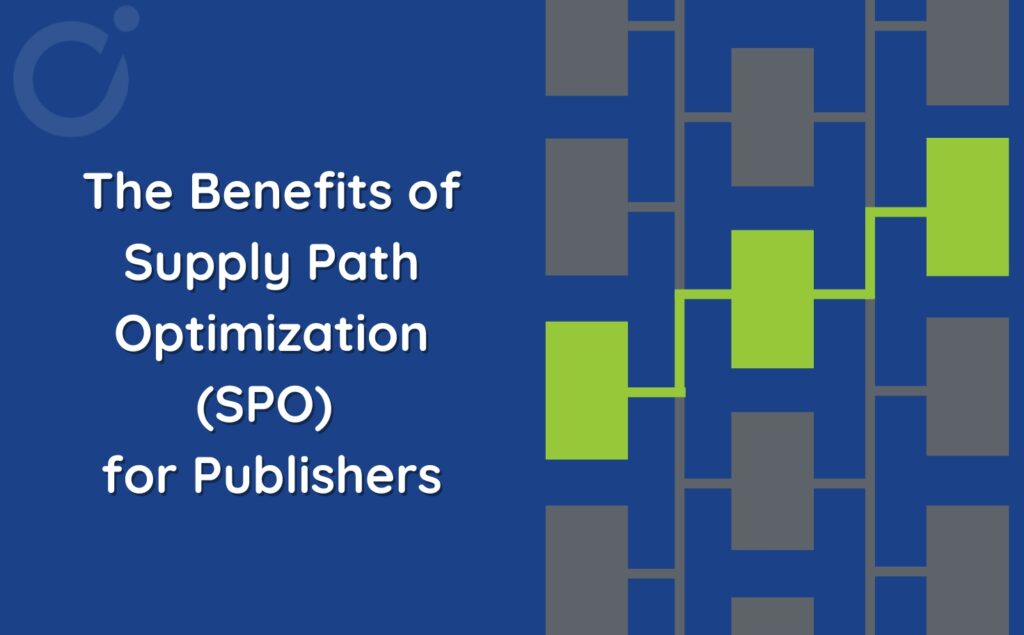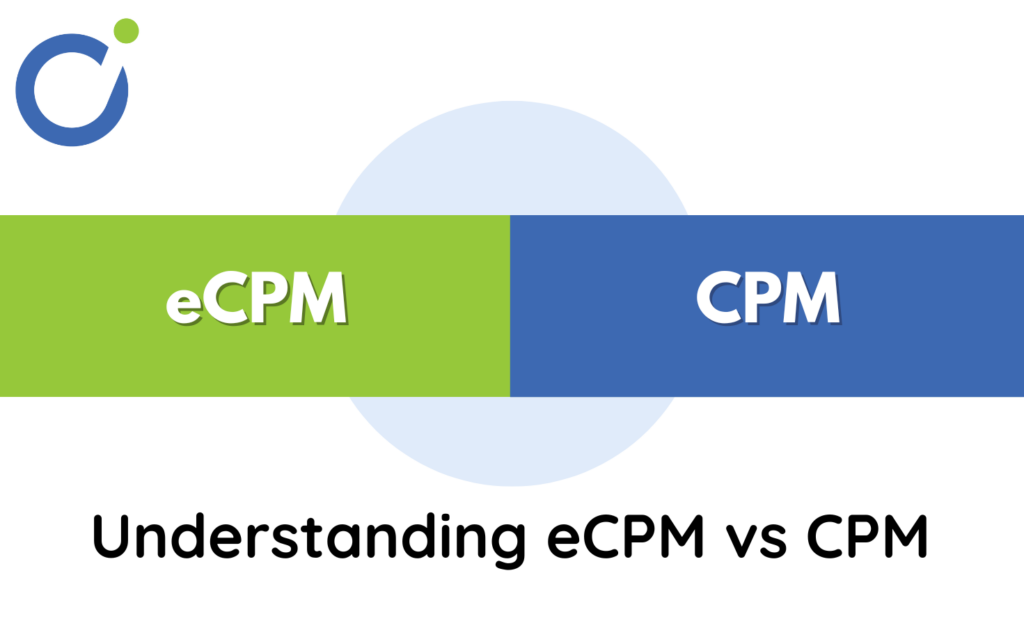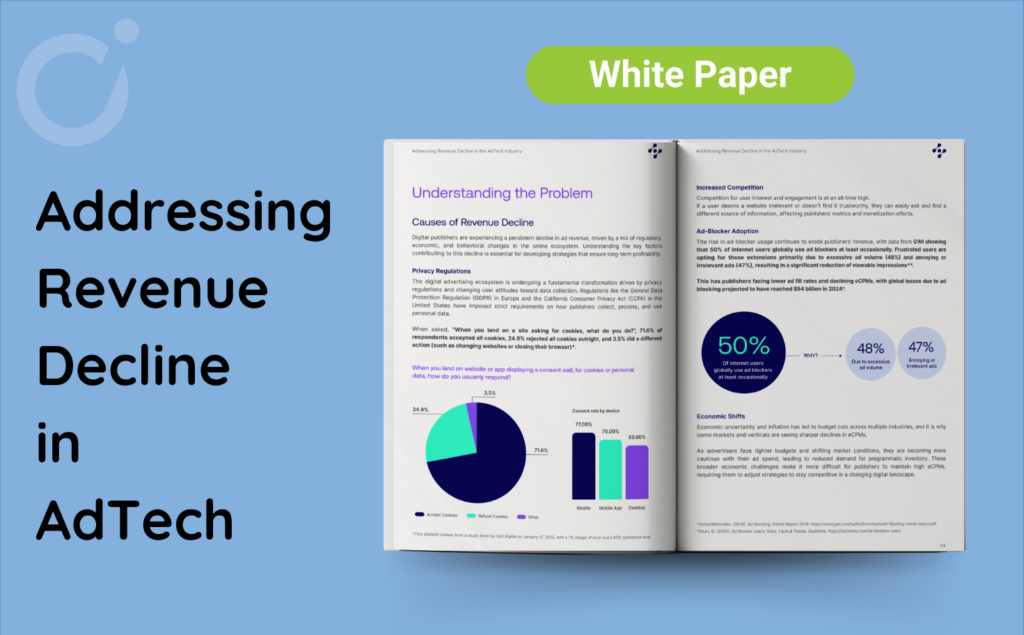To begin our new series on header bidding, we will start with an in-depth introduction to this innovative programmatic advertising technique. Header bidding has become an essential tool for digital publishers looking to maximize their ad revenues and gain greater control over their ad inventory.
Introduction to Header Bidding
In the digital advertising landscape, publishers are always on the lookout for tools to help them in maximizing ad monetization and in automating operations.This pursuit has driven the development of innovations like real-time bidding and programmatic advertising itself. More recently, a breakthrough enabled publishers to enhance revenue while gaining greater control over their ad inventory: header bidding.
Header bidding is an advanced programmatic advertising technique where publishers are able to call on and collect multiple bids from various demand sources such as SSPs and Private Marketplaces simultaneously before their own ad server is called. This process helps them maximize revenue by guaranteeing that only the highest bidder is chosen, and makes advertisers compete amongst each other to reach the desired ad space.
History of Header Bidding
Before diving deeper into header bidding’s technology and benefits, it is useful to review the inception of this technique.
Header bidding was first introduced in 2014. But back then, it was used interchangeably with other terms such as advance bidding, holistic yield management and tagless integration (even though it requires tags). In terms of who exactly invented it, the credit is still up in the air, as it is quite difficult to truly pinpoint one true maker. Some call OpenX the father of header bidding, but there is no strong evidence to back that claim up.
It wasn’t until a year later when the term was popularized thanks to AdExchanger’s popular article “The Rise Of ‘Header Bidding’ And The End Of The Publisher Waterfall”.
As to why header bidding was developed, there are two main opinions on the subject. Some argue that it was unavoidable. Programmatic advertising has consistently aimed to make processes more transparent, faster, and efficient – and header bidding checks all of these! Its development was simply a natural progression. Others argue that Google held too much power with its DoubleClick for Publishers (DFP) platform, which had long been the go-to choice for many publishers before header bidding came to fruition. This platform offered a convenient, integrated, closed system but it also prioritized Google’s own ad exchange which limited opportunities for external bids and reduced publisher earnings. Industry experts wanted to take back some power and this is what inspired the creation of header bidding.
The adoption of header bidding wasn’t immediate, as some publishers were initially cautious about this new technology. However, it expanded rapidly in the following years as its advantages became clearer. By the first quarter of 2022, 70% of online publishing websites in the United States of America had adopted header bidding.
No matter the reason for its development, header bidding ultimately became a powerful technique in programmatic advertising, replacing the traditional waterfall bidding method. Let’s explore this topic further.
Before Header Bidding (Waterfall Bidding)
For many years, waterfall bidding dominated the programmatic advertising landscape.
In this setup, a publisher’s available ad inventory was sequentially sent to one demand source at a time. Each demand source auctioned the ad inventory to the highest bidding advertiser. If the top bid met or exceeded the price floor set by the publisher, the inventory was sold. If the highest bid fell below the price floor, the inventory was passed to the next demand source in line until it was eventually sold. This did not maximize ad monetization.
How Does Header Bidding Work?
Now that we’ve learned about the history behind header bidding, let’s review how this technique works!
To start off, publishers must have a JavaScript tag in their website’s header (which is how the name came to be). This piece of code, called a header bidding wrapper, connects the website to various sources interested in buying the ad inventory. Header bidding wrappers, also called header bidding containers or frameworks, all facilitate the header bidding auctions that bring revenue to publishers. Without them, publishers would have to integrate individual pieces of code in their website’s header for every single bidder that wants to place a bid on the ad inventory.
To have a clearer view of it, here is the client-side header bidding process outlined step-by-step:
- A user lands on a site that has available ad space in it.
- The code on the website’s header sends out a request to multiple advertising demand partners with details about the user, the webpage they have landed on, and the ad space on the page.
- Demand partners who are interested in the ad space respond with their bids.
- These bids are gathered and forwarded to the site’s ad server.
- The ad server evaluates the data from the bids to pick the highest one, deciding which ad to display.
- Finally, the chosen ad is rendered on the site and the impression is logged.
Publishers can control which advertisers can bid on their inventory and also have the ability to increase the price of their premium advertising inventory.
This entire process is very fast – around 400 to 800 milliseconds on a desktop computer and 800 to 1200 milliseconds on a mobile device!
Header bidding is a process. In order to put it into practice, you need a header bidding platform. There are many of which to choose from, including Amazon’s Unified Ad Marketplace, Prebid Server, Google’s Exchange Bidding, and Opti Digital´s ad management solution.
Client-Side vs Server-Side vs Hybrid
Now, you might be wondering, what exactly did “client-side” mean before? Well, there are two main types of header bidding wrappers: server-side and client-side.
We will dig into these types now!
Client-Side
In the beginning, all header bidding was client-side header bidding. This implementation means the whole process happens using the browser. It sends requests in parallel as the page loads. The partners place bets, and after that, the software detects the winner and transmits information to the publisher’s ad server. The whole “load” of accepting requests and determining the winner lies on the shoulders of the browser.
Server-Side
Server side header bidding came onto the scene after client-side header bidding. Instead of leaving everything to the browser, the heavy lifting of sending out requests for bids and handling the mechanics of the auction is placed onto an ad server. You still have code in your header, but that code pings the server and tells it to call in the bidders and hold the auction. Then, the ad server sends the information from the auction to an ad server, and the rest of the header bidding process takes place.
Pros and Cons
So what exactly do these two different approaches entail?
Well, as the entire process takes place within a user’s browser in client-side header bidding, it is easier to collect user-specific information such as IP addresses and cookies. This ability to identify users allows for targeted ad campaigns, which ultimately results in more revenue for publishers. Additionally, client-side header bidding is known for its ease of setup and greater transparency, particularly when publishers use wrappers like Prebid.js.
However, because client-side header bidding adds a number of scripts in the page header, page load times get longer, negatively affecting the user experience and resulting in fewer impressions loaded. This also slows down the performance of the browser and the website itself, which is not a big deal for updated and modern hardware, but can be a slight determent for older hardware and outdated websites. Finally, client-side header bidding has limitations due to browser restrictions on bid requests and tracking pixels, which can impact the flexibility of measurement capabilities. Client-side header bidding is also heavily dependent on third-party cookies, making it more vulnerable to the evolving privacy landscape and possible future cookie phase-out.
Server-side header bidding solves the main problem with client-side header bidding: page latency. Because the work is done on a dedicated server that has a lot more power than a typical website, server-side header bidding is much quicker. Furthermore, having it be done on a server allows publishers to call in more bidders, which means more demand for their inventory. The trade-off comes with reduced transparency for SSPs, who lose direct access to the user’s browser, weakening cookie-based user identification. Server-side header bidding also comes with environmental considerations, as maintained physical servers can consume more energy compared to browser-based processes.
The choice between the two often hinges on balancing the need for transparency, direct data, and scalability.
Hybrid
However, there is technically a third option as well – publishers can also choose to implement a mix of both!
Opti Digital’s Ad Management technology relies on a hybrid wrapper involving server and client-side auctions. This approach increases competition for ad space in real-time and makes sure to select the most valuable SSPs without compromising your website’s speed and organic search traffic! Through this approach, publishers are able to maximize the potential of their ad inventory while also protecting the user experience and ensuring a healthy core web vitals score. Contact us if you would like to learn more about this.
The choice between these depends on inventory type, demand, and current market trends. As each implementation comes with its own advantages and disadvantages, the best way for publishers to move forward is to reach out to seek guidance in AdTech providers and test out which implementation brings out the best ad monetization on their site.
Implementation
Although setting up header bidding may require some technical expertise, we have summarized the steps necessary to follow in order to successfully configure it on your website.
- Demand Partners: Begin by selecting and partnering with demand sources. These could include ad exchanges, SSPs, or direct advertisers. Choose partners that align with your audience and content to maximize ad monetization. Reach out to and establish relationships, obtaining their necessary integration codes or tags. Consider including Private Marketplaces as they allow you to offer ad inventory in exclusive, high-value auctions.
- Choose a Header Bidding Wrapper: Select a header bidding wrapper or platform, such as Prebid. The wrapper will manage the entire auction process and integrate with your chosen demand partners.
- Implement the Wrapper Code: Add the wrapper’s JavaScript code to your website’s section.
- Configure Bidder Adapter: Set up adapters for each of your chosen demand partners within the wrapper. This involves adding specific code for each partner, which allows them to participate in the auction.
- Set Auction Parameters: Configure auction settings such as timeout limits, price floors, and ad sizes. These parameters help optimize the bidding process and ensure it aligns with your ad monetization strategy. Consider using dynamic price flooring to adjust minimum bid thresholds based on demand, time of day, or other real-time factors.
- Integrate with Your Ad Server: Connect your header bidding setup to your ad server. This typically involves creating line items that correspond to different price points for each demand partner.
- Testing and Optimization: Thoroughly test your header bidding implementation to ensure it’s working correctly. Monitor performance, analyze data, and continuously optimize your setup to maximize revenue and minimize latency.
- Ongoing Management: Regularly review and adjust your header bidding strategy. This includes adding or removing demand partners, tweaking timeout settings, and updating price floors based on performance data.
By following these steps, you can successfully implement header bidding on your website and start benefiting from increased competition for your ad inventory
Benefits
All the effort that goes behind implementing header bidding does pay off, as header bidding brings many benefits to publishers. No matter the publishing vertical, the benefits will include:
- Increased revenue: The most important benefit of header bidding is, of course, money. With advertisers competing for the premium inventory, better eCPM is guaranteed. Thus, the ultimate goal of increasing the website’s ad revenue is achieved.
- Diversified Demand: Since the auction happens simultaneously between multiple ad networks and ad exchanges, multiple demand partners bid for the inventory, which increases competition, and maximizes the potential ad monetization.
- Transparency and Control: One of the biggest selling points of header bidding is that it gives publishers a lot of customization opportunities. Publishers are able to control which demand partners can bid for their inventory, they can also prioritize some advertisers over others, and they can even prevent certain advertisers from taking part in the auction. Furthermore, publishers are able to make quick changes. If one of the partners isn’t delivering, publishers can quickly remove them from their header bidding setup. Likewise, if a publisher discovers a demand partner that looks promising, they can add them just as easily.
- Better Ad Quality: Since publishers can choose certain advertisers to bid on priority, they may expect higher bid prices. This increases competition among all the bidders, improving the chances of getting better ads.
- Improved UX and SEO Results: With server-side header bidding, it takes much less time to choose the winning bid and display the corresponding ad, helping with latency issues.
- More Insights: Header bidding gives publishers a lot of data, which can be used to strengthen your strategy. For example, when the inventory is sold for a higher price than the floor price, publishers are able to get a grasp of the real value of their inventory, and can raise the floor price or take additional steps. The end result of having better data is a better ability to make decisions about your offering.
Conclusion
Header bidding has been a revolution in the world of programmatic advertising, ensuring publishers get a fair deal and their ad monetization is maximized. Unlike waterfall biddings, it has enabled a fair and competitive bidding environment, significantly increasing publishers’ revenues and revealing new valuable insight into their ad inventory.






